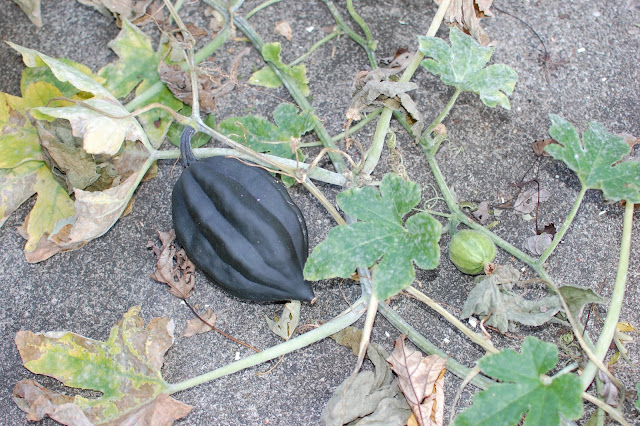So this past Sunday I finally couldn't bear to watch the destruction occurring in my collard patch any longer. The harlequin bugs won, and I lost. I even bought a highly rated insecticide soap a few weeks ago, but I never even took it out of the plastic wrap. The bugs just continued to multiply and suck the juice out of all of the leaves. By the time I pulled the plants up, the leaves were brittle and had yellow pock marks all over them.
After pulling the plants up, I saw between 50-100 of the bugs crawling on the ground. As I watched them, I remembered reading that a vacuum can be a great tool when it comes to cleaning bugs off of leaves, or in general. Sure enough, I took out the wet/dry vac and was able to suck up dozens of the bugs as they fled to the sweet potato leaves and the asparagus. As I was doing it, I realized that maybe I should have tried this when I first noticed the bugs. I might have been able to nip the whole infestation in the bud.
And that brings me to the Kale. As a recap, about a month ago I cut almost all of the leaves off the kale plants, harvesting most of it, because I was losing the battle to white flies. I left the stems, and a tiny bit of new growth at the heart of the plant. I then sprayed the plants with a neem oil / garlic concentrate combo once a week for two weeks. The results: The white flies disappeared -- but the new grown never really rebounded. New leaves definitely grew, but they were brown around the edges. The looked "burnt" and unhealthy. Like the collards, this past weekend I just admitted defeat and pulled them up.
In the empty collard patch, I sowed more hairy vetch, rye, and peas. It is kind of cool watching the garden slowly turn from summer to fall, one patch at a time. I love the idea of putting in the cover crops. It really makes it feel more of a transition than an "end" to the growing season.
I have spinach, collards, chard, and watercress in seed trays that I am trying to germinate for the fall/winter. Hopefully the temperature has cooled down enough to get a good germination. Otherwise, I'll have to try it inside (which is also quite warm), or just wait another month. If everything goes well, I will transplant the greens in with the cover crops and hopefully keep the garden going for a few more months.
































